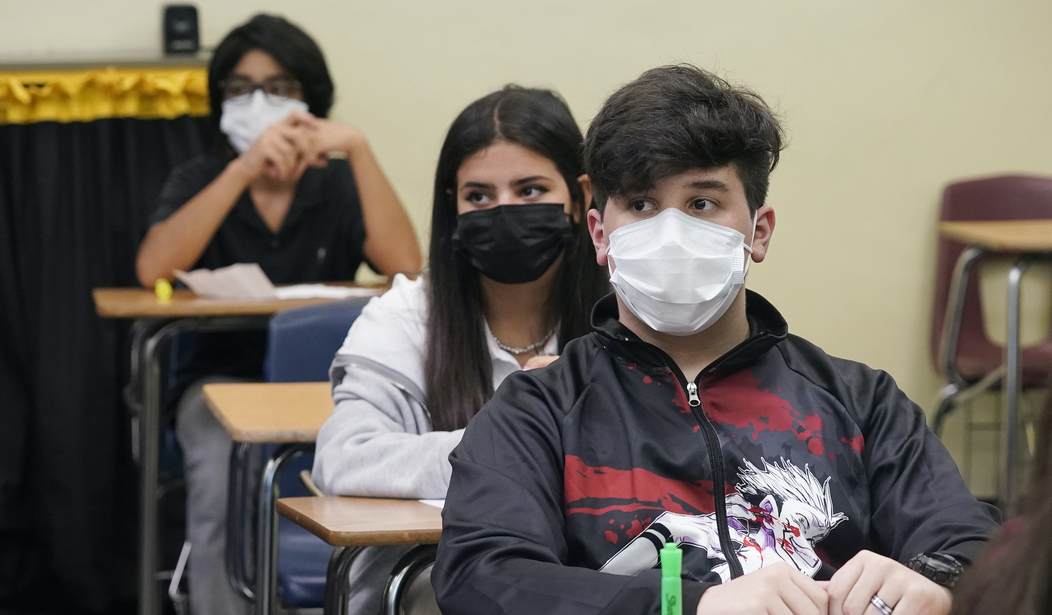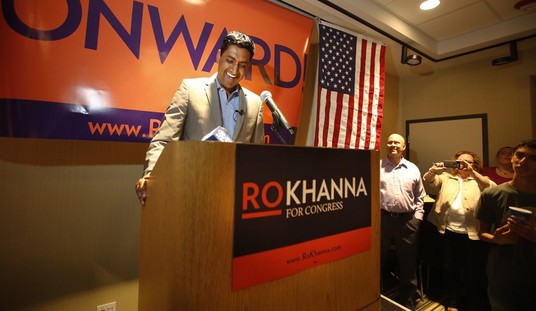I’ve written before about pandemic learning loss and the evidence that school closures were a disaster for a lot of kids in terms of math and reading scores. But it’s worse that that. Students who returned to school are also showing signs of mental health issues at greater rates than before. The NY Times spoke to more than 300 school counselors who reported an increase in emotional problems compared to pre-COVID levels.
Nearly all the counselors, 94 percent, said their students were showing more signs of anxiety and depression than before the pandemic. Eighty-eight percent said students were having more trouble regulating their emotions. And almost three-quarters said they were having more difficulty solving conflicts with friends…
Emotional health is necessary for learning to happen, counselors said, yet children had lost stamina and motivation in the classroom: “If what they are asked to do requires critical thinking or more than 10 minutes of effort, many students struggle, become frustrated and refuse to do the work,” said Laurenne Hamlin, a junior high counselor in Elkhart, Ind.
Another weakness was social skills. Sixty percent said children were having more trouble making friends, and half said there had been more physical fighting and online harassment of peers. “There is horrific violence and bullying,” said Alaina Casey Mangrum, a counselor in a Pittsburgh elementary school. “There are physical altercations every single day.”
One factor that seems to correlate with these problems is the duration of school closure. The longer a school remained closed, the more likely students are getting into fights now. Another issue some of the counselors pointed to was the influence of social media, particularly TikTok.
Computers were another factor, they said. After using them to attend school from home for so long, students are having trouble disconnecting, and more have had unrestricted access to the internet. Counselors connected that to an increase in age-inappropriate sexual behavior, drug use and vandalism. Thirty percent to 40 percent said they had seen an increase in each. In comments, many mentioned TikTok challenges, like one to vandalize or steal from school bathrooms…
Amy DeCesare, a counselor at a Catholic elementary and middle school in Albuquerque, said: “The influence of things like the TikTok monthly ‘challenges’ to young people, encouraging them to vandalize or disrespect the school environment and staff, is obvious. We also see significant online bullying and harassment — frequently teachers are the targets.”
The Times wrote about the influence of TikTok last year.
It’s all on TikTok. Missing are soap dispensers, bathroom mirrors, paper towel holders, fire alarms and even a teacher’s desk — anything that can be swiped from school and then revealed in a TikTok video, with the hashtag #deviouslicks.
In the last month or so, TikTok has hosted close to 94,200 similar videos under #deviouslicks, or #diabolicallicks, according to the website Know Your Meme. The hashtag also seems to have encouraged more serious vandalism, with students taking ceiling tiles, hand-railings, toilets and bathroom stalls…
“We are trying to convince students that this is not a prank, it’s vandalism,” Stephen Hegarty, the district spokesman, said. “It’s potentially a criminal behavior, and it’ll be a really bad day when we identify it.”
The TikTok challenges seem more like a symptom than a cause. Kids who are already acting out in other ways (fights, bullying) are essentially taking suggestions from their peers on other ways to act out. The article suggests the vandalism is an inappropriate way some kids are trying to deal with the powerlessness they’ve felt over the past couple years.
My own take is what we’re seeing in some of these schools sounds a lot like the kind of misbehavior we’ve seen among adults since the pandemic. For instance, by April of 2020 there were reports that while traffic was down, the number of people speeding was up. There were stories from around the country of people pulled over for driving over 100 miles per hour. And it turns out that problem never went away, even as traffic returned. About the same time that some of these TikTok challenges were taking hold last fall, the Associated Press published this story on speeding drivers.
Motorists do not seem to be slowing down.
“People are flying down the roads,” Maine State Police Cpl. Doug Cropper said of summer traffic on Interstate 95. “It’s just ridiculous.”
Tickets issued by the California Highway Patrol for speeding in excess of 100 mph from January to June were nearly double pre-pandemic levels, and the number of tickets for reckless driving citations grew, as well, officials said.
In New York state, the percentage of fatalities for which speeding was the primary cause and the total number of speeding tickets grew from January through June, compared to the year before the pandemic, officials said.
“There is continued concern about the rise in speeding and aggressive driving as we enter the heart of the vacation travel season and increased traffic volumes on the highways,” said Beau Duffy, spokesperson for New York State Police.
And it’s not just speeding. Road rage incidents are up as well as the Washington Post pointed out last month.
Last year was the worst on record for road rage shootings in the United States, according to data released by Everytown for Gun Safety, which found that more than 500 people were shot and wounded or killed in more than 700 incidents. The monthly average of 44 people killed or wounded by gunfire on the roads was double the 2019 average…
Experts say the rise in road-rage-related shootings is a quantifiable slice of an alarming problem. While it is difficult to determine the frequency of other kinds of road rage incidents — such as making obscene gestures, throwing objects or sideswiping or forcing a fellow driver off the street — anecdotal reports suggest that belligerent behavior on the road has generally increased during the pandemic.
“It’s like the Wild Wild West out there, and it’s just unacceptable,” said Pam Shadel Fischer, senior director of external engagement with the Governors Highway Safety Association. The group manages the National Law Enforcement Liaison Program and frequently hears from officers about “angry drivers, road rage aggressiveness, people going incredibly high rates of speed and people being really unpleasant to each other,” she said. “It is very concerning.”
I can’t prove these things are related but that’s how it seems to me. The pandemic created a general anxiety combined with a sense that the rules don’t really matter or weren’t being enforced. There was a literal breakdown in the social order for a period of time. Kids in school are reflecting that with emotional problems, fights, etc. Adults on the road are exhibiting some of the same behaviors, i.e. breaking the law, acting reckless, getting into fights with other drivers on the road. Not everyone is acting out but enough people are that we see a noticeable bump in these behaviors. I’ve been on the road here in California and you can still feel it out there. There’s an edginess that wasn’t there before. Things just haven’t settled down yet.







Join the conversation as a VIP Member